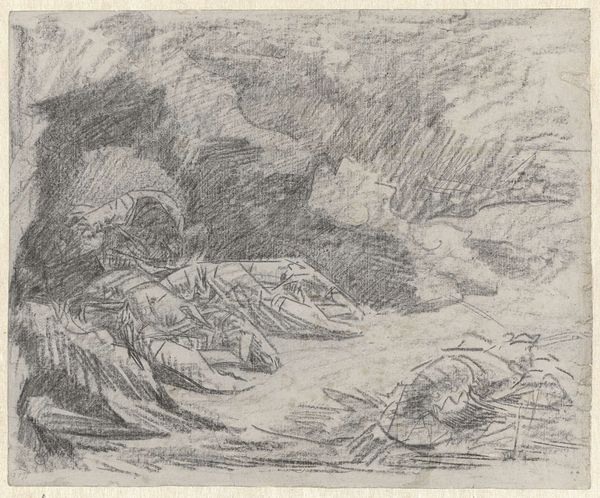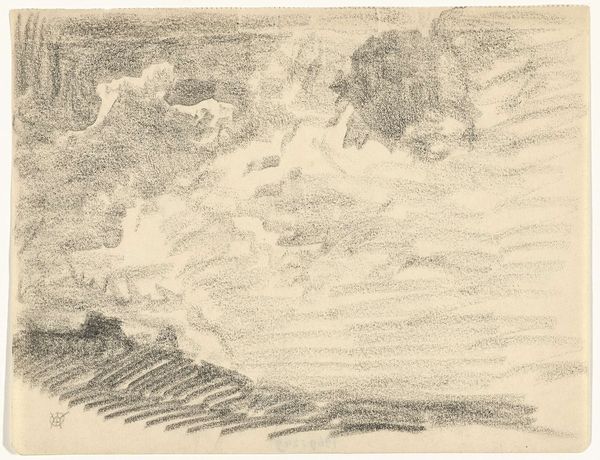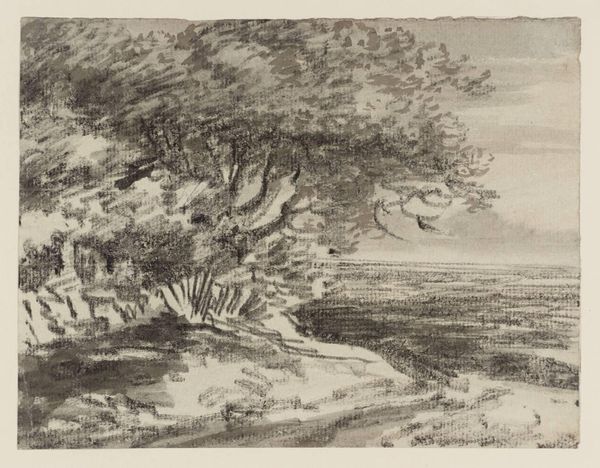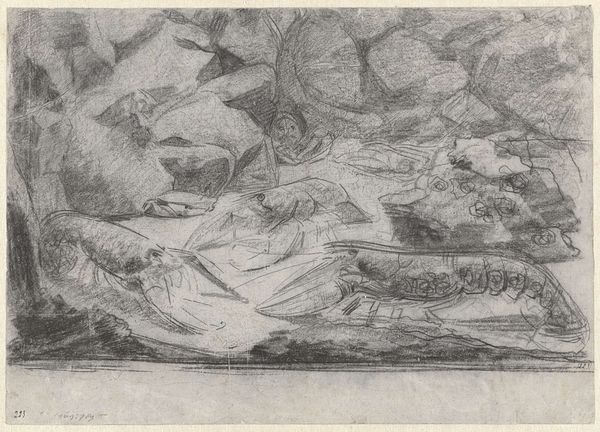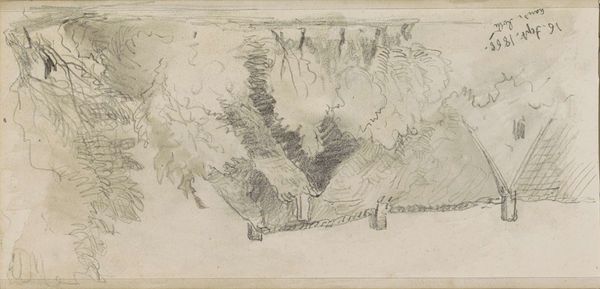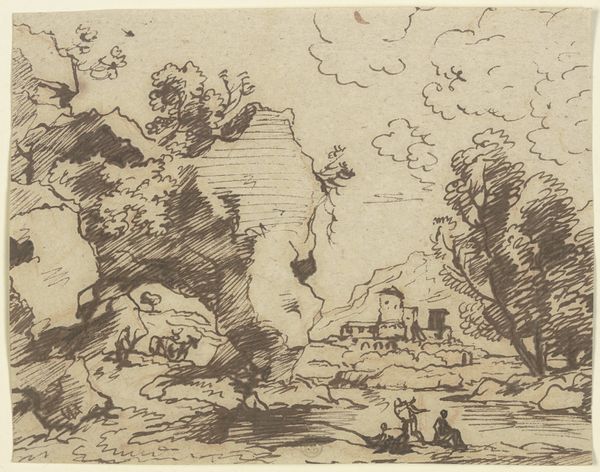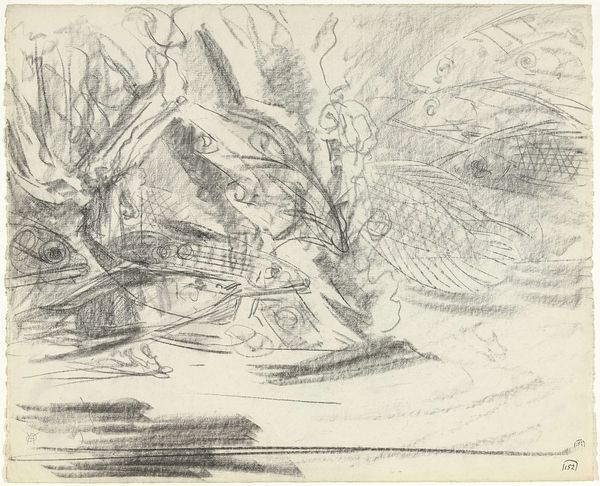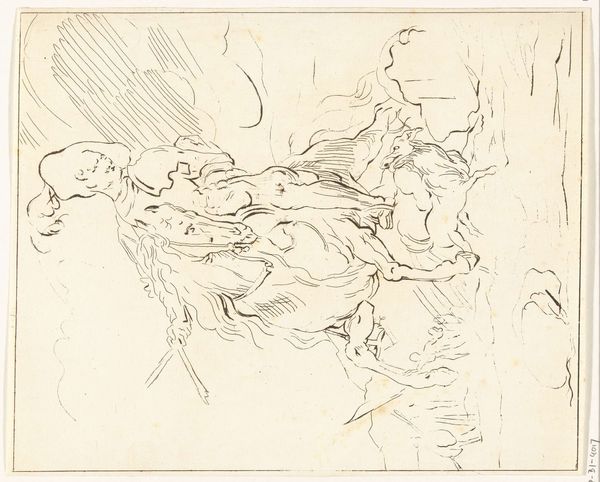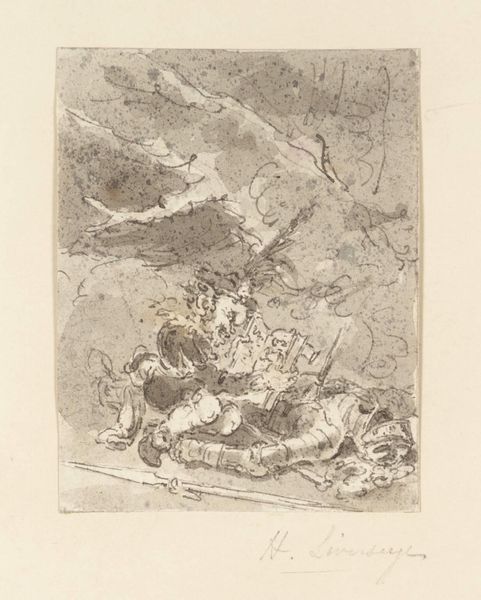
print, etching
#
narrative-art
#
baroque
# print
#
etching
#
figuration
#
history-painting
Dimensions: 1 13/16 x 2 1/16 in. (4.6 x 5.32 cm) (sheet)
Copyright: Public Domain
Editor: So, this is "Dedale et Icare" by Stefano della Bella, an etching from the 17th century, found at the Minneapolis Institute of Art. It definitely captures a tragic moment…there's such dynamic movement in the figures falling from the sky. What story does this etching tell in the grand scheme of things? Curator: This piece offers a glimpse into how classical mythology was being reimagined and utilized in the 17th century. Prints like this, especially of well-known narratives like Daedalus and Icarus, circulated widely. The narrative itself would be understood, but then what purpose did a print such as this serve, distributed in the public sphere? Editor: Beyond illustrating the myth? Was it just about accessibility, making art cheaper and more available? Curator: Partly, yes. But consider who might be commissioning or purchasing such a work. Della Bella was patronized by the Medici family. Think about the social and political functions that art played during the Baroque period. How might this myth of hubris and consequence function within that context, perhaps teaching the dangers of aspiring beyond one's station, or perhaps speaking to ambition? Editor: So, it’s less about simple storytelling and more about the message that story conveys, and who that message benefits? Curator: Exactly. Consider also how the *style* – Baroque, full of drama and movement – reinforces those potential meanings. It makes the fall all the more poignant, doesn't it? How would a more static, classical composition affect our interpretation? Editor: I hadn't thought about it like that, the visual style being so deliberately aligned with potential political messaging. It is less just a depiction, more like… a propaganda piece. Thanks, this was insightful. Curator: And thank you; you've given me a new perspective on how the museum displays such historical narrative pieces today, considering these broader social questions.
Comments
No comments
Be the first to comment and join the conversation on the ultimate creative platform.
